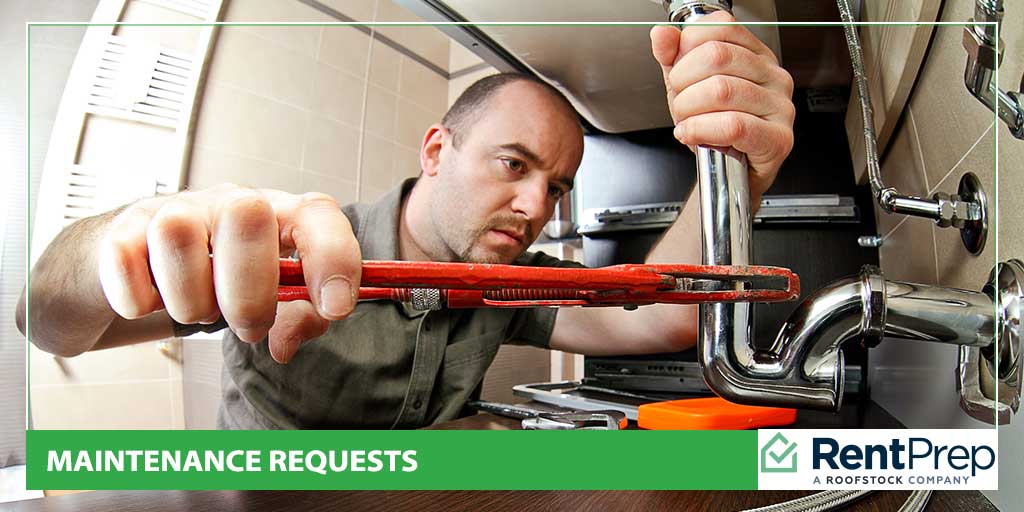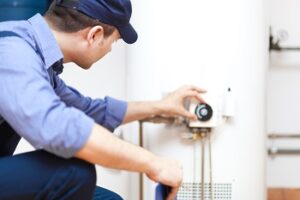
The new shelter-at-home guidelines being enacted in many areas are something that most landlords have never had to deal with. Continuing your usual rental practices during this time may seem overwhelming or impossible. However, there are ways you can keep up with the necessary work during this time.
One area of confusion for many landlords is how to handle maintenance requests during shelter at home orders. Is it possible to do work on a property despite the restrictions? What types of work can be done, and what type of work must be postponed?
These are confusing times, and you may be feeling stuck in what you can do for your tenants at this time. Despite everything happening, however, there are still a number of ways you can continue to be a responsible landlord to help with your tenants’ issues without endangering anyone’s health.
A Table Of Contents For Maintenance During Stay At Home
- Note: Local Restrictions Vary
- Are Maintenance Requests Allowed During Shelter At Home?
- Examples Of Acceptable Emergency Maintenance
- Necessary Precautions During Maintenance Requests
- Communication Is Key
Note: Local Restrictions Vary
Before we get into the details of how to handle maintenance requests during shelter-at-home restrictions, we want to clarify something.
States, counties, and cities have varying degrees of shelter-in-place orders in effect at this time. This means that what is allowed in one state might not be allowed in another. To be absolutely sure of what is allowed in your state, you will need to check your specific local government’s declarations.
That being said, we are writing today’s guide to these restrictions so it will cover even the stricter states. In a stay-at-home situation, it is better to err on the side of caution as much as possible, so we are writing this guide for landlords to be able to do just that.
Our recommendations today take into consideration the guidance laid out by the National Apartment Association.
The safety of you, your hired contractors, and your tenants is very important. Keep that in mind as you decide when to implement the following suggestions.
Are Maintenance Requests Allowed During Shelter At Home?
What do you do if your tenant requests maintenance or you had maintenance scheduled before the shelter at home went into effect? Are these requests allowed to be completed during this time, or do they need to be postponed until things reopen?
This is a question that many landlords are facing at this time. Let’s break down different types of maintenance to cover what is and what is not allowed.
How To Handle Urgent Requests

Maintenance requests that are urgent, such as a broken pipe or other essential utility problem, are permitted to be addressed in most areas. These problems would interfere with your tenant’s quality of life if they did go unaddressed, so you are requested to address them in a timely manner.
To handle these requests, you will need to either do the work yourself or call in a qualified contractor. As construction and maintenance workers are considered to be essential in most areas, these companies are still working. Get in touch with your preferred contractors to set up maintenance as soon as possible.
How To Handle Non-Essential Problems
Many of your tenants are likely to be spending more time at home than usual, and this may cause them to come across some things that they would like to be repaired. They might request updated windows, new paint, or adjustments on that squeaky shower knob they forgot to mention before now.
Though these problems can be frustrating for them to live with, they are not problems that need to be repaired during a shelter-in-place order. Bringing someone into the apartment to work on these types of problems could be considered reckless, and it is best to avoid doing these improvements at this time.
Your tenant may be frustrated by these limitations, and that is understandable. If you are comfortable doing so, you can give your tenant the go-ahead to work on any minor repairs (such as chipping paint or a squeaky door handle) on their own. You might even give them some pointers on how to do so.
Normally, landlords wouldn’t encourage their tenants to do their own work, but things aren’t normal right now. If your tenant has the skills, allowing this may benefit you both.
The key thing to do in this situation is to communicate directly with your tenant. Explain to them why you are not able to come in to do that particular work right now and offer any alternative solutions you can think of in order to help them feel more comfortable.
How To Handle Pre-Existing Requests
Did you have maintenance scheduled before the shelter-at-home orders went into effect? If so, you and your tenants might be left trying to decide if you can continue with those plans or not.
There are a few things you need to consider when handling pre-existing or scheduled maintenance:
- Is the work urgent? If so, you can likely proceed with it as planned.
- Is the work routine maintenance that should not be skipped (i.e., fireplace or water heater safety checks)? If so, you can likely continue as planned.
- Is the work completely cosmetic? If so, you will likely want to delay the work according to local regulations.
Work can still be done during this time, but there is a balance to be struck between “essential” and “cosmetic” work at this time to keep your tenants and any hired contractors safe as social distancing protocols continue.
If your tenant or you are adamant that work that was scheduled needs to continue despite being cosmetic, check with your local regulations to make the final call on what is and what is not permitted. There are some exceptions and workarounds that might be useful.
Maintenance In Unoccupied Units
If your area is still allowing construction and maintenance work to continue with little restrictions, you can likely still allow work to be done on unoccupied units that you own. However, there are a few suggestions you will want to make sure you adhere to:
- Hired contractors and anyone working at the property should be following necessary masking and distancing rules while working.
- Hired contractors should not be brought in to work on unoccupied units if it will increase the risk factor to neighboring units (i.e., in a high-occupancy apartment building).
- If workers are brought into a high-occupancy building, common areas they pass through must be regularly disinfected.
These rules also apply to you if you are doing the work yourself or with your own employees.
All construction work does not need to come to a halt during a stay-at-home order, but every state has different rules about which types of construction can continue. Make sure to check these rules before you encourage or begin any work on unoccupied units.
Examples Of Acceptable Emergency Maintenance
Determining what is and what is not to be considered urgent maintenance can be confusing; what qualifies as necessary and what can be put off until later?
Let’s run through a few examples to help get a better understanding of what should be completed during shelter at home and what should be put off until restrictions are lifted.
Example #1: Sewage Backup At A Property
If there is a sewage backup at one of your properties, that needs to be addressed as soon as possible. This problem could pose a threat to the safety and welfare of your tenant and threatens the idea of the unit to be habitable.
Units must be kept in a livable condition; any problem that threatens a tenant’s ability to reside there should be considered urgent.
Verdict: Essential
Example #2: Kitchen Repaint And Upgrade

Your tenant has been wanting the kitchen in the unit upgraded for some time, and you had previously agreed to consider the work this year. They are now requesting that the work get started as soon as possible.
In this case, the work is non-essential and should be delayed until restrictions are lifted. Despite the upgrades being something desirable for your tenant, the upgrades do not affect whether or not they can survive in the unit and should be postponed.
Verdict: Non-Essential
Example #3: HVAC Unit Problems
The HVAC system in your tenant’s unit is on the fritz. Some days it works fine; other days they have trouble getting it to function properly.
This should be considered essential maintenance. While the HVAC unit is not completely out of commission, this is the type of problem that should be addressed before things are beyond repair. Even during a shelter-at-home order, this is an essential fix and should be coordinated as soon as possible.
Verdict: Essential
Necessary Precautions During Maintenance Requests
If you determine that some of the maintenance requests sent in by your tenants are essential and should be continued, there are some precautions that should be taken. These precautions will ensure the safety of your tenants, their neighbors, and anyone working on the property.
- Make sure that anyone working at the property follows social distancing and masking protocols.
- Make sure the area and all high-touch surfaces are properly disinfected before and after the work is done.
- Check with any hired contracting companies about their sick and monitoring policies to ensure that any workers coming to the property have been doing their best to stay safe.
- If possible, request that your tenants are not at the unit or are confined to a specific area of the unit while the work takes place to avoid human-to-human contact and to stay in line with social distancing protocols.
- Communicate the precautions being taken as well as these suggestions to your tenant before any work occurs at their unit.
While you may not be responsible for your tenant’s overall health and safety, you do play a role in ensuring that you can manage maintenance requests without creating unnecessary risks for anyone involved. Take the time to consider the best ways to handle this situation as you move forward with each request.
Communication Is Key
Maintenance requests during shelter at home can be stressful; how do you know when it is OK to continue to work on units as needed? Hopefully, today’s guide makes it easier to differentiate between what is essential and what is non-essential when it comes to rental maintenance.
Regardless of how you handle each case for maintenance, it’s very important that you continue to communicate with your tenants.
With shelter at home going on, communicate the following to your tenants:
- How to submit maintenance requests in a no-contact way (i.e., phone, email)
- What types of requests will be prioritized
- What precautions they should take if maintenance will be done
- How they can contact you with additional questions
- Links to CDC and local guidance
Shelter-at-home orders are confusing for everyone involved; don’t worry if you are a bit unsure about the best way to proceed. With these guidelines, it should be easier to make the required decisions about rental maintenance.

